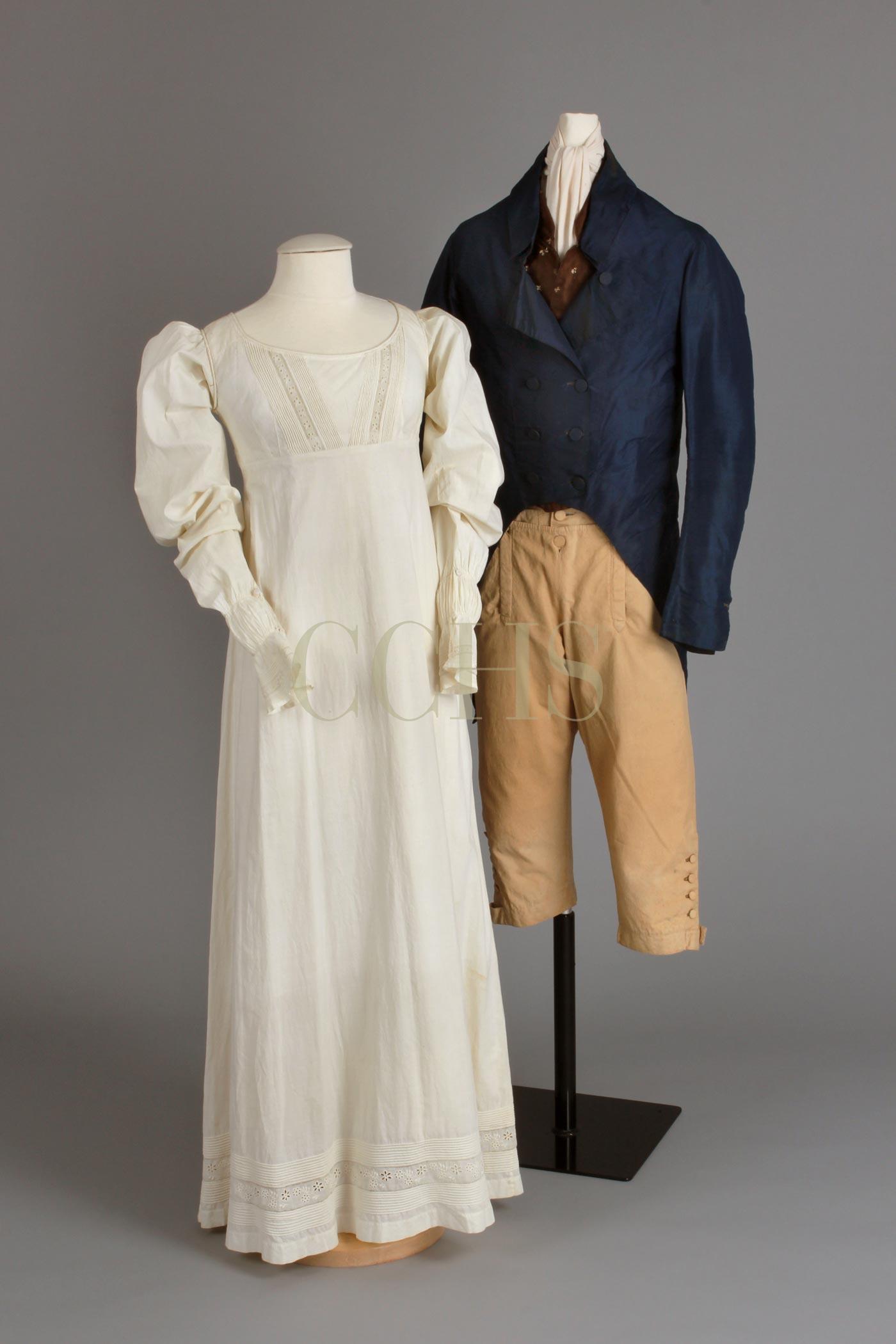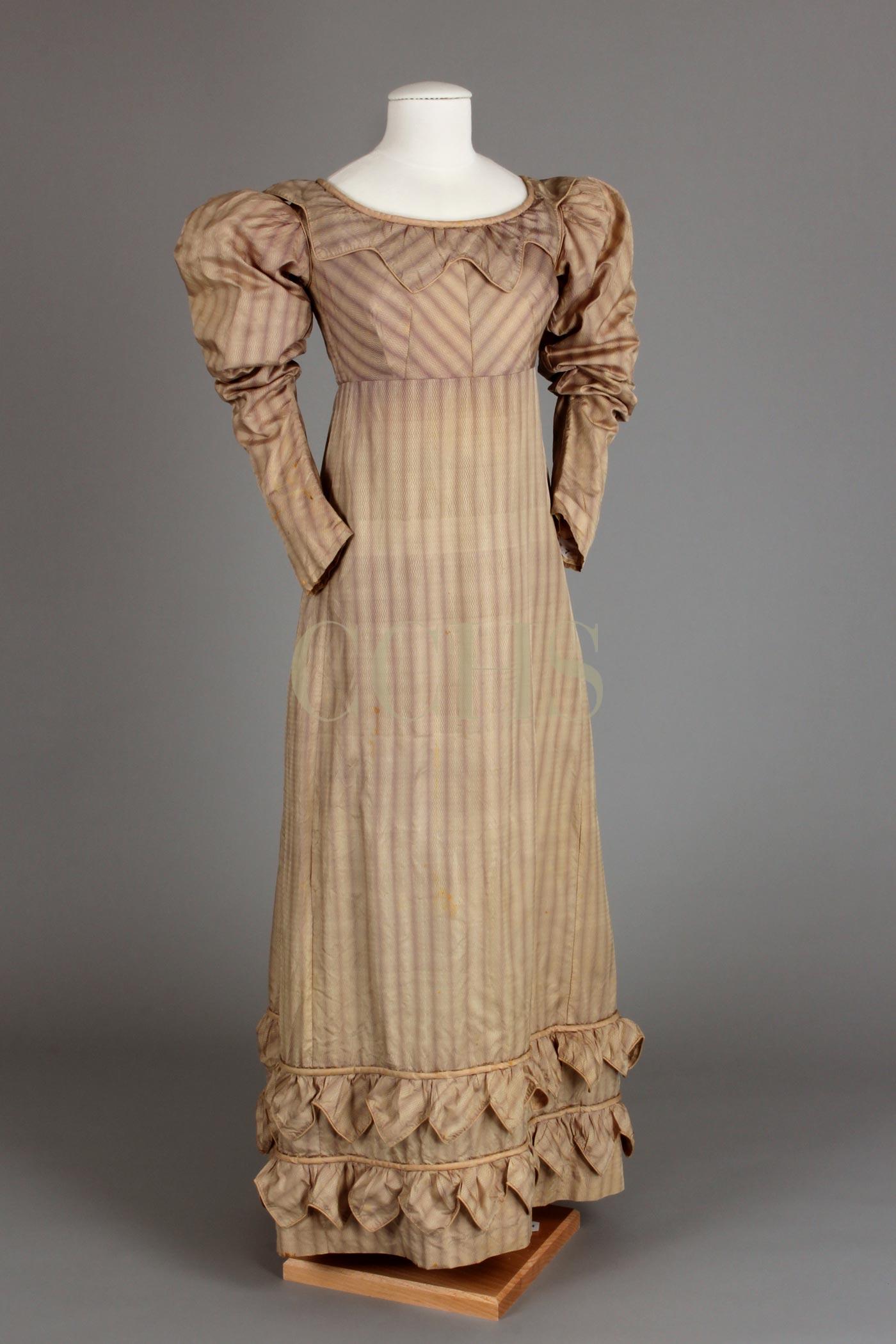


Like other Americans, local people borrowed design elements from ancient Greece and Rome. This style, known as Neoclassical or Empire, rejected 18th century French fashion. Its reference to ancient democracies represented the importance of civic participation that appealed to our New Republic. This look had a simple profile and high waistband for women and men.
Economic opportunity from local agricultural production and water-powered mills enabled fashion choices. Products such as food and metals were sold to local, national and international markets. Mills also mass-produced textiles for county residents and beyond. However, mechanization only extended to fabric manufacture. Clothing construction was still done with needle in hand.
The public fascination with classical art, architecture and civilization inspired the Neoclassical style. The emphasis was on the high waist. Women wore high-waisted gowns and men wore similar short tail coats and vests. These slender, columnar silhouettes mimicked the marble-white sculptures in color and drapery. Even working clothes reflected a fashionable silhouette defined by a drawstring casing at the high waist. Children also had clothing that allowed free movement.
Underclothes created the foundation and fit for the clothing worn over it. They also protected these garments from filth. Most underwear was linen. It was durable and could withstand frequent washing. People changed their underwear more frequently than outerwear and generally had a greater number of these undergarments.
Women wore: shift (later called chemise), stays (later called corset), petticoat. Men wore: shirt with long tails
Hand sewing was the only method of making clothing before 1840. At home and school, girls learned cross-stitch, back stitch, hemming, and darning in order to mark and maintain the clothing they wore and would later be expected to make for their families. Garment construction was also a profession. Dressmakers created customized gowns and tailors fit men’s wear and made women’s riding habits.
Clothing was valuable. Fabric was time consuming to produce or expensive to import. During this period, people in Chester County sometimes bequeathed clothing in their wills, itemized with descriptions and monetary value. Detailed accounts of clothing were also included in newspaper advertisements describing runaways (indentured or enslaved people) or persons who had committed a crime, including stealing the clothing itself.
225 N. High Street, West Chester, PA 19380 | 610-692-4800
Sign up for our Newsletter